Eve Smith's Blog, page 2
October 14, 2021
OFF TARGET: COMING SOON

I am delighted to tell you that my new speculative thriller, OFF TARGET, will be out on 17th February next year, and even earlier (17th December), for those who prefer e-books.
Off Target is set in a near future where genetic engineering has become the norm for humans as well as crops, and parents are prepared to go to extraordinary lengths to ensure that their babies are healthy, altering genes that may cause illness. And more…
As with my first book, The Waiting Rooms, real facts drawn from extensive research have provided the inspiration for this thriller.
The idea came when I learned how genetics will not only revolutionise medicine and agriculture, but also the way we have babies. And how soon this might happen.

In Off Target’s world, genetic technologies influence practically every area of our lives: what we eat and drink, how we construct and furnish our homes, the pets we breed and, importantly, how we conceive.
We already use genetic screening to select embryos for implantation during IVF.
In my book, the fertility industry goes one step further, offering "corrections" to embryos should selection alone not suffice.
This world is not as far off as it sounds.
We are approaching a future where, as Jamie Metzl says in his excellent book, Hacking Darwin, we will take active control of our evolutionary process by genetically selecting and altering our offspring. But, when it comes to rewriting our own biological code, even the scientific community is divided.
And the science is moving much faster than regulation or public debate.
Don’t see the genetics revolution as abstract science.— Jamie Metzl, author of Hacking Darwin
This is the story of you and your family and your future, and it is unfolding in front of your eyes.
I’ve been enthralled by the rapid advances in genetics that have enabled us to tackle new viruses like COVID 19, as well as preventing incurable diseases such as Huntington’s.
But I am equally apprehensive about other applications of this technology and the widely-differing opinions and values being deployed to guide those. I am not alone.
History shows we are often ill-equipped to understand the longer term consequences of our scientific ambitions or prevent their malevolent manipulation. The unsavoury history of eugenics is a salutory warning to us all.

In March next year, the Third International Summit on Human Genome Editing will take place, bringing together leading scientific experts from across the world to examine the potential risks and benefits of genome editing technologies as well as the significant ethical and societal issues they pose.
This summit, if a consensus is reached, could have major implications for what is considered morally acceptable, how such technologies might be regulated and to what extent the general public: people like us, get to have our say.
Genome editing has the potential to advance or condemn our species and our planet.
Which is why a much broader debate needs to be had that involves not just scientists, but everyone. I am hoping that OFF TARGET may, in some small way contribute to that debate.
As well as being a thrilling good read.
August 23, 2021
AGEISM: AN INSIDIOUS PANDEMIC
At the end of July, one of the UK’s national papers published an article claiming the government had made ‘secret plans’ four years ago to deny the elderly hospital care.
In the event of a severe flu pandemic, it reported, over-seventies could be refused hospital treatment as a strategy to alleviate pressure on the NHS.
Instead, these patients would be offered support in nursing homes for ‘end of life pathways.’
Put bluntly, medics could be authorised by the health secretary to prioritise patients based on probability of survival as opposed to clinical need.

The UK government’s response to the article was that these were purely theoretical scenarios in pandemic planning documents and that they had never informed policy or the government’s response to the COVID 19 pandemic.
Some might disagree.
Sacrificing one part of society to save the rest is an abhorrent concept to most of us. It is exactly this dilemma I chose for my novel The Waiting Rooms, set during an antibiotic resistance crisis, where no one over seventy gets access to new antibiotics. If they become ill, they are sent to hospitals for the elderly, nicknamed The Waiting Rooms: hospitals where no one ever gets well.
I had hoped such a concept would remain fictional. Yet those living and working in care homes and hospitals during the early stages of the coronavirus pandemic have their own stories to tell.

The COVID care home scandal will doubtless comprise a major part of the public inquiry into the UK government’s handling of the COVID pandemic.
Bereaved families will want to know why an estimated 25,000 patients were discharged from hospitals to care homes without any coronavirus testing to free up beds in hospitals, following government guidance in March last year. And why it took until the 15th April for coronavirus testing to be deemed necessary before hospital discharge.
Panorama gathered data from 39 hospital trusts, which showed three-quarters of people discharged up until that point were untested.
By early May 2020, according to Public Health England figures, a third of care homes in England had reported outbreaks of coronavirus. Between April and May, care home deaths peaked at over 3.5 times the expected average compared to previous years.
As for testing in care homes, it would take until the 7th June for every care home housing residents over-65 to be offered testing, and another month after that for the introduction of regular testing in care homes to be announced, let alone delivered.
It is as if care home residents were seen as expendable. Despite thousands of empty beds they were de-prioritized when it came to getting access to hospital care, and had blanket do not resuscitate orders imposed on them without due process.— Donatella Rovera, Amnesty International’s Senior Crisis Response Adviser
Such abuses are deeply disturbing.
During an investigation by Amnesty International, care home managers and staff described “a complete breakdown” of systems in the first six weeks of the pandemic response. They spoke of waiting to receive guidance, struggling to access adequate amounts of PPE, and of having no access to testing, despite having to manage infected patients urgently discharged from hospitals.
Staff and relatives told Amnesty International how sending residents to hospital was discouraged or outright refused. In addition, at the peak of the coronavirus pandemic, some care homes were asked by local GP surgeries or Clinical Commissioning Groups to place blanket do not resuscitate orders on their residents, to keep hospital beds free.
The results of their investigation were compiled into a report last October: As If Expendable: The UK Government’s Failure to Protect Older People in Care Homes during the COVID-19 Pandemic
But underlying these reports is a more insidious issue that involves all of us. One that I deliberately set out to explore when I started writing my novel, way before the coronavirus pandemic. Our attitudes to the elderly.

Age discrimination is a global problem, with the lowest levels of respect for older people in high income countries. The actress and producer Frances McDormand calls it ‘a cultural illness’: there is something wrong with how our society views age.
Research shows the COVID pandemic has only made things worse.
Ageist stereotypes about older people’s frailty and value to society have prejudiced the way some COVID policies have been designed and delivered. In addition, the deluge of negative rhetoric on social media at the start of the pandemic reinforced dangerous biases and assumptions that alienated the elderly even more.
Older chronological age is indeed a risk factor for COVID infection, disease severity, and mortality. However, older people are not just a homogenous group of defenceless people in need of protection.— Eva-MarieKessler & Catherine E Bowen, "COVID ageism as a public mental health concern", The Lancet
A report by the World Economic Forum: COVID and Longer Lives: Combating ageism and creating solutions, published last October, claims that the pandemic has not only hurt older people in terms of their physical health but it has also damaged their mental health through ageist attitudes and increased loneliness and isolation, a subject I touched on in another blog last year: What Can We Learn From Life in Lockdown?
The WEF report also highlights the damaging effects of such biases on older people’s livelihoods, especially in lower and middle-income countries, with lockdowns and social distancing further reducing their ability to earn an income.
Stereotypes, prejudice and discrimination based on age enhance existing inequalities and prevent effective countermeasures. The assumption that all older people are frail or dependent is not only inaccurate but also harmful... Undervaluing the economic contributions of older adults and considering them a burden on economies is another form of ageism. — Sofiat Akinola, Project Lead, World Economic Forum
We have to find a way to get beyond these prejudices. Just as we are battling sexual and racial discrimination, we need to overhaul our assumptions and generalisations to battle age discrimination: against the young and the old, and foster what WEF calls ‘intergenerational solidarity’.
In short, we need to connect with each other as individuals, and on much more meaningful terms than age.
Ageism tends to paint all older adults as the same. The reality is that older persons are diverse and have several different identities. They are more than their age.— Sofiat Akinola, Project Lead, WEF

My debut novel, The Waiting Rooms, set in the aftermath of an antibiotic crisis, is available as an audiobook, e-book or good old-fashioned paperback and you can find out more here.
May 4, 2021
WHY ‘DISEASE WHAC-A-MOLE’ DOESN’T WORK
You’ve probably heard about the UK government’s budget cuts to overseas aid. A recent report in the Guardian detailed some of the research projects affected, including, of all things, one tracking new coronavirus variants in India.
The cuts are not evenly spread, meaning some projects are much harder hit than others: in some cases by over 85%.
Some of those projects include polio eradication, (a disease that is having a resurgence, as I mentioned in my last blog), projects on sexual and reproductive health, and drug treatment and research programmes on Malaria, HIV and AIDS.
By cutting back funding and support in these areas, we are risking not only political capital, but more importantly, decades of progress and painstaking gains in the fight against killer diseases.
The global community cannot afford to cut aid to established programmes that have contributed significantly to the major progress made against malaria and other diseases; we must continue to look outwards, rather than turning inwards at the expense of the world’s most vulnerable.— BMC Medicine, Identifying and combating the impacts of COVID-19 on malaria
Diseases have always been great opportunists. A modelling study published in the Lancet last year predicted significant negative impacts of the Covid pandemic on other diseases, including Malaria, HIV and TB, through a combination of interrupted treatment programmes, delayed diagnosis, and, in the case of malaria, disruption to insecticide-treated net campaigns. The scientists warned that such interruptions could lead to 5-year death tolls of the same magnitude as Covid in places with a high burden of these diseases.
But despite the warnings, funds and personnel have and are being diverted, and, as we are seeing all too painfully in India, health systems have been overwhelmed, as nations and institutions scramble their defences against the pandemic. What’s more, lockdowns have prevented people from attending regular health clinics or seeking new treatment, and childhood vaccination programmes have been curbed.
So how have the veteran killers responded to our preoccupation with the deadly new Covid pathogen?

Provisional data compiled by the World Health Organization (WHO) from 84 countries indicates that an estimated 1.4 million fewer people received care for tuberculosis (TB) in 2020 than in 2019 - a reduction of 21%. This will have significant consequences on mortality rates and transmission.
Reduction in sexually transmitted infections (STI) screening & education programmes during the pandemic is exacerbating the spread of disease as people aren’t diagnosed or self-medicate. WHO has warned that the overuse of certain antibiotics like azithromycin during the COVID-19 pandemic may also contribute to a rise in STI- resistance, including what’s called the ‘super gonorrhea’ strain, increasingly prevalent throughout the world.
And an HIV study reported that South African primary care clinics have been severely impacted by the COVID-19 lockdowns, with reductions in HIV testing and treatment initiation.
As for malaria, it is predicted that the number of young African children dying of this disease will double in the coming year because of interruptions to diagnosis, treatment and net campaigns. This may also impact efforts to control the spread of drug-resistant parasites and insecticide-resistant mosquitos.
The same study made a sobering comparison between the Covid pandemic and the Ebola crisis in West Africa, where similar treatment disruptions resulted in excess malaria deaths outnumbering deaths from the Ebola virus. Deaths from HIV infection and tuberculosis also soared.
As we deal with the COVID-19 pandemic, it is crucial that other major killers such as malaria are not ignored. History tells us that if we do, the consequences will be dire, particularly in vulnerable populations.— BMC Medicine, Identifying and combating the impacts of COVID-19 on malaria

There is a salutary lesson here: we apply piecemeal initiatives at our peril. The whac-a-mole approach to fighting the pandemic, focusing our medical artillery on the immediate crisis to the detriment of other health priorities, is doomed to fail because diseases operate synergistically, amplifying adverse health impacts on vulnerable populations. And diseases, as we have witnessed all too acutely, are no respecters of borders.
What is needed is a more holistic approach, informed by the ‘syndemic’ nature of this pandemic.
Syndemic refers to a situation where two or more diseases interact in a way that causes damage greater than that caused by the diseases on their own. An unfortunate example of the whole being greater than the sum of its parts.
The (syndemic) model discards conventional understandings of diseases as discrete entities distinct from each other and independent of the social contexts in which they are found.— One Health, volume 12. The SARS-CoV-2 pandemic: A syndemic perspective.
The article quoted advocates a ‘One-Health’ approach to fighting the pandemic which takes into account the interconnectedness of diseases as well as the social conditions of different communities.
This means treating the whole, not individual parts. It means not cutting funding for vital research and beleaguered health programmes in other countries. It means not taking our eye off persistent foes like TB, malaria and HIV, or that other pandemic quietly capitalising on the crisis: antimicrobial resistance.
Only by taking a holistic approach can we hope to stem the spread and resurgence of disease: new and old.
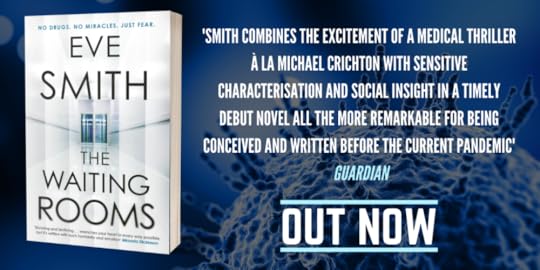
My debut novel is set in the aftermath of an antibiotic crisis, and is available as an audiobook, e-book or good old-fashioned paperback and you can find out more here.
March 6, 2021
REASONS TO BE CHEERFUL…
Lately, I’ve been feeling a little more hopeful about our prospects for this year.
Maybe it’s the few sunny days that have graced us. Or the daffodils’ reliable splash of gold in the verges, the crocuses pushing their heads up despite us all being barricaded indoors.
Or maybe it’s sheer relief because I just met my submission deadline for my next book.
Forty-two years ago, Ian Dury found many Reasons to Be Cheerful in a song apparently inspired by the near-fatal electrocution of his roadie by a microphone stand whilst on tour in Italy.
His list is much more entertaining than mine, although, in my defense, many of his reasons are currently off-limits under lockdown: the Hammersmith Palais and The Bolshoi Ballet two cases in point.
Dury was also a victim of a virus: one that left him with a paralysed arm and leg but which, through concerted global vaccination efforts, had largely been wiped out: polio. But with the pandemic and the Taliban thwarting vaccination programmes, and rogue strains on the rise, polio cases are once more making a worrying comeback.
Whilst thinking about this blog, I read one I posted last spring, when we were (in the UK at least) still pretty cheerful as a nation, most of us blissfully ignorant of the impact the pandemic was about to have on our lives.
Three weeks before the UK first went into lockdown, global case numbers for Covid 19 were 90,000 and deaths were 3000: shocking numbers back then, but incomparable to the 116 million cases and 2.584 million deaths we’ve reached one year on.

In my blog, I wrote about the large number of antibiotics being prescribed to prevent or combat secondary bacterial infections in Covid 19 patients which would potentially drive up levels of antimicrobial resistance (AMR): the cause of the crisis in my first book, The Waiting Rooms.
We now know that excessive amounts of broad spectrum antibiotics have been prescribed to Covid 19 patients over the past fourteen months. A review of studies from the US and Asia showed 71.9% of hospitalised patients diagnosed with Covid 19 had been prescribed antibiotics whereas only 7-8% of patients were diagnosed with a bacterial or fungal infection.
Another issue has been the potential spread of resistant pathogens on personal protective equipment (PPE). Many clinical institutions have been forced to reuse PPE due to limited supplies, which risks transmission of bacteria between patients. A survey last summer from the American Nurses Foundation showed that 68% of nurses had to reuse PPE because there wasn’t enough, and regional flare-ups of resistant infections in hospitals during the pandemic correlated with a shortage of PPE.
Covid’s a lobster dropped into boiling water, making a lot of noise as it expires, whereas AMR is a lobster put into cold water, heating up slowly, not making any noise.— Dame Sally Davies, UK Special Envoy on Antimicrobial Resistance (AMR)
The full impact of the pandemic on antimicrobial resistance levels is unknown. AMR research, surveillance and monitoring programmes have suffered as resources have understandably been prioritised elsewhere. This is particularly acute in lower and middle income countries where resources were already constrained. But we urgently need to reinstate AMR stewardship programmes and take stock. Because, while our attention is consumed by Covid 19, the ‘silent pandemic’ of resistance is gaining ground, as Dame Sally so eloquently states above.
But I said I was feeling more hopeful, right?
So where’s my cheerful list?

My reasons to be cheerful: 1,2,3:
1) Better hygiene practices and lockdown have reduced transmission of other diseases
A recent report in Nature claims that the measures employed against Covid 19 such as social distancing and improved hygiene have quashed the number of influenza cases and most other respiratory diseases, with the exception of rhinoviruses, responsible for the common cold.
In fact, researchers are suggesting that, with an absence of hosts, some flu variants may be killed off for good. Given the annual death toll for influenza, that is seriously good news.
2) Cross-border collaboration has achieved remarkable results
This pandemic has catalysed cross-border cooperation and transparency on an unprecedented scale. The development of rapid diagnostic tests and the quest to find an effective vaccine and cure have united governments, scientific & medical institutions, philanthropic foundations and corporates in a common purpose. Thanks to their efforts and investment, and the global sharing of data, processes that would normally take decades, like the development of drugs and vaccines, have been accelerated to a matter of months.

3) New finance and incentive models are stimulating development of new antibiotics
In the last year we have seen new funding models for antibiotic development being trialled.
In the UK, the NHS will pay for antibiotics up-front with an annual ‘subscription fee’ based on their public health value, as opposed to how many they sell, to give financial guarantees to drug-developers. This will help galvanise the stalling pipeline of new drugs.
New pots of money have been made available to incentivise antibiotic research and development. An AMR Action Fund was launched last summer with a pharmaceutical industry investment of US$1 billion to stimulate investment in new antibiotics.
Ineos recently announced £100 million funding for a new AMR research institute in Oxford.
And the global non-profit partnership CARB-X, led by Boston University, just donated $18 million to GSK for the development of two vaccines to prevent two bacterial diseases responsible for a significant number of deaths globally and which currently require huge volumes of antibiotics to treat. Vaccines play an important role in combatting drug resistance, too.
Vaccines are powerful weapons in the global fight against antibiotic-resistant bacteria. Vaccines not only prevent infections, they also reduce the need for antibiotics, helping to curb the spread of drug resistance.— Erin Duffy, R&D Chief of CARB-X
I consider the above splendid reasons to be cheerful.
The challenge now is to apply the lessons from this pandemic to the management and containment of AMR. Because these two public health crises require many of the same things:
investment in research, surveillance & monitoring programmes, open sharing of data, and the training and education of the political and medical communities and the public at large.
If governments can integrate AMR stewardship into their Covid 19 strategies and continue listening to what the scientists and the medics are telling them, we may just avert a second global health crisis.
Which will give us even more reasons to be cheerful next spring, and all the springs beyond.

My debut novel, The Waiting Rooms, set in the aftermath of an antibiotic crisis, is available as an audiobook, e-book or good old-fashioned paperback and you can find out more here.
January 29, 2021
TACKLING ISSUES
I don’t know if you caught Rhod Gilbert’s BBC documentary earlier this week: Stand Up to Infertility, but if not, you should. I heard him interviewed on Women’s Hour, and very entertaining he was too, but this was humour with a point: male infertility is a huge and growing problem.
And yes, it’s impossible to discuss it without launching into Finnbar Saunders’ style innuendos and double entendres, intentionally or not, and Rhod could win an award for just that.
But men don’t talk about their sperm issues, (or, as Rhod might say, tackle their tackle) and that’s not helping. Well, only a few do, like Rhod and the wonderful Benjamin Zephaniah who I heard discuss his own infertility struggles, on radio, several months ago, which was incredibly moving.
Even though just as many men suffer fertility problems as women.

Rhod makes a very good case. Number of registered gynaecologists & obstetricians in the UK? Over 8000. Number of andrologists? (A term most people haven’t heard of but which is the male reproductive specialist equivalent.) Fewer than 200.
Thankfully, there are now fertility forums a-plenty for women, who can share their journeys with others who are suffering the relentless rollercoaster that is IVF. But, despite this era of gender equality, and outing difficult topics that haven’t historically been shared, dodgy sperm doesn’t seem to have made it onto the agenda. Until now.
You may wonder why I have suddenly bridged from cheery tales about antibiotic resistance, inspired by my first novel, The Waiting Rooms, to infertility.
The reason is, that my next book, Off Target, tells the story of a couple who are both struggling with unexplained infertility. It’s another speculative thriller, set in a world where IVF and other treatments have become the norm.
And where would-be parents are confronted with an intimidating ‘shopping list’ of genetic reproduction services, promising them a healthy child. Sometimes, more.
Which is why I’ve had my head down researching this area for months.
It has been enlightening.

The fertility industry is, as Rhod says, mostly geared up for women, and a highly profitable industry it is, too. The global IVF market is projected to be worth $36 billion by 2026.
One in six couples struggles to conceive and it’s getting worse, driven partly by the fact we’re starting our families later, and also by other behavioural and environmental factors such as obesity, alcohol & drug consumption, sexually transmitted infections and stress.
What is amazing, given that infertility affects men and women equally, is the lack of treatment options for men. Once the basic behavioural improvements have been adopted (good diet, regular exercise, no toxins) and any infections dealt with, if matters still haven’t improved there are essentially just two options left: injecting sperm directly into the egg and/or extracting sperm from the testicles. If that doesn’t work, for the time being at least, you’re pretty much into donor sperm territory. Which is very tough, if you have your heart set on fathering your own biological child.

However, radical new fertility solutions are in development. This is the kind of territory I find rich for fiction: exploring how imminent science and tech will affect society and the everyday, and what choices it may force. And, believe me, there is a revolution coming in fertility treatments, or should I say assisted reproductive technology (ART): the smart new term for services like IVF, but bigger, with genetics on top. These new services may provide additional solutions for men and women, but they will raise challenging ethical dilemmas, too.
It’s early days for Off Target: I’m just about to submit my draft manuscript to my ever-patient publisher, Orenda Books, and embark on the necessary rounds of edits, but we are aiming for publication roughly this time next year.
On a more immediate and practical level, Rhod Gilbert has launched a website as part of his awareness campaign: himfertility, which has simple, accessible information on male infertility and how to get help.
I hope Rhod is able to take to the road again, post lockdown, and continue spreading the word. It’s a great initiative, and anything that can bring people together to talk about something so fundamental, so primal as the desire to have a child, and the heartbreak when it doesn’t go to plan, has to be the dog’s bollocks.
See what I did there? (Not a patch on Rhod: watch the documentary.)
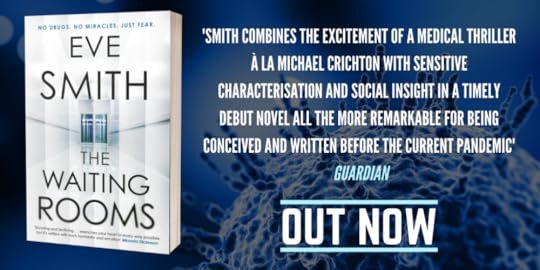
My debut novel, The Waiting Rooms, set during an antibiotic crisis, is available as an audiobook, e-book & good old-fashioned paperback and you can find out more here.
November 16, 2020
PLANE CRASHES, IN SLOW MOTION
18th November marks the start of World Antimicrobial Awareness Week.
Health workers, scientists and global institutions like the World Health Organisation will be working hard to increase awareness of global antimicrobial resistance (AMR), and urging policy makers to take swift and firm action to prevent the ongoing emergence and spread of drug-resistant infections.
The misery that coronavirus has inflicted on so many people over the past year has highlighted the cataclysmic impact of health emergencies, that even our advanced technologies and sophisticated minds cannot easily overcome. Not just health impacts, but financial, social and psychological impacts, too. And those impacts will continue, long after the virus has gone.
Which gives me hope that governments worldwide may be more receptive to calls for action on other health emergencies, like AMR, rather than focusing on the next short-term vote-winner or burying their heads in the sand.
Because we do need action. Now.

As I have mentioned in previous blogs, the coronavirus pandemic is unfortunately accelerating the rise of antimicrobial resistance. The huge volumes of antibiotics and other drugs being prescribed to treat primary and secondary infections in COVID-19 patients are giving bacteria and viruses the opportunity to develop resistance, spread further and leach into our waste water systems, rivers and oceans.
Bacteria grow and divide every 20 minutes and the more antibiotics you use the more resistance you end up with.
— Professor Stephen Trent, Center for Vaccines and Immunology at the University of Georgia
What’s more, the disruption to health services caused by the pandemic, and delays in the diagnosis and treatment of other infectious diseases are allowing them to spread, too.
One of those is an age-old foe, and also the trigger for a pandemic in my novel, The Waiting Rooms. Amongst infectious diseases, it is the number one global killer: Tuberculosis.
Before COVID-19, over 4,000 people were dying from TB every day.
According to new estimates published in the European Respiratory Journal, and WHO projections, that number could rise significantly if there is substantial health care disruption and social distancing measures aren’t adequate.
Models predict between 100,000 and 200,000 additional TB deaths over the next five years in India, China and South Africa alone, and WHO project double that number globally if detection and treatment falls, even for a few months, undoing the good work that has been painstakingly achieved around the world to stem the growth of this increasingly drug-resistant disease.

TB has always been an opportunist, taking advantage of compromised immune systems and natural disasters since the Ancient Egyptians.
As one of my characters, Mary, says in The Waiting Rooms:
‘Let’s face it, anything that can flourish for three million years must be pretty adept at survival.’
Current thinking is that having pulmonary TB does not make you more likely to contract COVID-19, but if you do fall ill, the severity of the infection is likely to be worse because of existing damage in the lungs. And if your treatment for TB is disrupted, especially if it’s a
drug-resistant strain, then the predicted outcomes are not good.
TB is a disease of poverty, and economic distress; vulnerability, marginalization, stigma and discrimination are often faced by people affected by TB.
TB is curable and preventable. About 85% of people who develop TB disease can be successfully treated with a 6-month drug regimen.
— WHO Global TB Report 2020
There were 465,000 new cases of drug-resistant TB in 2019, of which 78% were resistant to the 2 most powerful first-line anti-TB drugs.
Multidrug-resistant TB (MDR-TB) caused an estimated 206,000 deaths globally in 2017: a figure that could increase to 2.5 million deaths per year by 2050 under the most alarming scenario, if no action is taken. India, China and Russia account for half of all MDR-TB cases.
If we have learned anything from the COVID-19 pandemic, it is that we need to take notice and take action when the world’s scientific community and health institutions tell us there is a problem. In The Waiting Rooms, there are many calls for action in the decades leading up to the antibiotic crisis. Calls that, despite the very real evidence of impending disaster, fall on deaf ears.
As my character, Mary, comments: ‘It’s like watching a plane crash, in slow motion.’
I appreciate this isn’t very cheery. But then, if you have read The Waiting Rooms, you wouldn’t expect it to be. My dystopia may be fictional, but it’s based on real facts.
There is a global TB pandemic happening, right now. But in the real world, at least for the time being, the majority of patients can still be treated with drugs that work.

By illustrating the very real horrors of a world where antibiotics no longer work, the hard choices inflicted on society when infections run rampant, and demonstrating just how easily that could happen, I am hoping that, in its own small way, The Waiting Rooms will contribute to awareness about antimicrobial resistance. Maybe even nudge a few of those actions further along.
Because this story needs to remain fictional.
We’ve got more than enough dystopia in our lives to cope with.

My debut novel, The Waiting Rooms, is a speculative thriller set during the advent and aftermath of an antibiotic crisis. It is available in paperback, e-back, limited edition hardback and will shortly be available as an audiobook. You can order here.
For more information on TB, visit here.
September 7, 2020
HOW WE REBUILD THE ARSENAL
By now, you are probably aware of the devastating impacts of antimicrobial resistance (AMR), and how COVID-19 is exacerbating this health emergency. My previous blogs have elaborated on such cheerful themes.
Well, you’ll be pleased to know that I finally have some good news, about antibiotic development. Sandwiched between more bad news, illustrating why we need these miracle drugs more than ever.
Currently, the COVID-19 pandemic is causing immense suffering and loss of life across the globe, but AMR has been - and will remain - one of the most significant threats to global human health.
— Mathew Upton, Professor of Medical Microbiology at Plymouth University
A recent UK study has suggested the mass use of antibiotics in COVID-19 patients could result in increased drug-resistance among the wider population.
In the UK, as in other countries, the majority of patients with COVID symptoms have been prescribed antibiotics to treat or prevent possible secondary bacterial infections, which can be very hard to diagnose alongside coronavirus symptoms.
Research by the University of Plymouth and Royal Cornwall Hospital Trust suggests this surge in drug-use could be placing an additional burden on waste water treatment works which, in turn, could lead to raised levels of antibiotics within rivers and coastal waters. Such levels could drive an increase in antimicrobial resistance (AMR) amongst a significantly larger group of people.
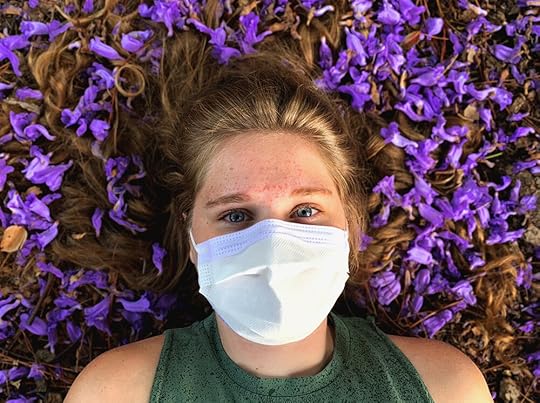
"COVID-19 has had an impact on almost every aspect of our lives," says Sean Comber, Professor of Environmental Chemistry in Plymouth and the article's lead author. “But this study shows its legacy could be felt long after the current pandemic has been brought under control. From our previous research, we know that significant quantities of commonly prescribed drugs do pass through treatment works and into our water courses.”
Such leaching of antibiotics into our rivers and oceans is a major problem: one that isn’t unique to the UK. A global study on antibiotic pollution across 72 countries last year found that hundreds of rivers were already awash with antibiotics, pre-COVID. This drug pollution in our waters means environmental bacteria can develop drug resistance, rendering the antibiotics useless. Which is why a young child who has never taken antibiotics can still have resistant bacteria in their bodies. The coronavirus pandemic is accelerating this crisis.
And yet, no new drugs are in sight.
We are witnessing the effects of one global pandemic, which has highlighted the threat of communicable disease. Alongside the threat of coronavirus is the increasing risk posed by antimicrobial resistance, exacerbated by a sparse antimicrobial development pipeline.
— Professor Gill Leng, Chief Executive of the UK’s National Institute of Health & Care Excellence, (NICE)
Our continued failure to research and develop new antibiotics is the next catastrophe-in-waiting. The current market model is broken: we know that. Antibiotics’ exorbitant R&D costs and uncertain financial return make their development commercial suicide.
Which is why no new classes of antibiotic have been brought to market in more than three decades.
Like other drugs, antibiotics are only paid for by customers once trials are completed and they have been deemed safe: to make money, you need to sell large volumes of them. However, given any new antibiotics will be fiercely restricted to preserve their efficacy, and prevent bacteria developing resistance, the numbers game simply doesn’t add up.

Which is where the good news comes in. The UK government, in partnership with the NHS, is leading the way on new models for development.
This summer, the UK launched a subscription-style payment model for new antibiotics, which is targeting new drugs for those pathogens which are becoming resistant to multiple or indeed all current antibiotics, such as certain bloodstream infections, sepsis and pneumonia.
New antibiotics will be paid for up-front with an annual ‘subscription fee’ based on their public health value to the NHS, as opposed to how many they sell, to give financial guarantees to drug-developers. The scheme hopes to incentivise companies to invest in researching and developing new classes of antibiotics in the face of growing drug resistance, whilst maintaining antibiotic stewardship and reducing unnecessary or inappropriate prescriptions.
Antibiotics underpin modern medicine and are integral for global health security. Governments and industry must work together to produce new antibiotics and ensure that we can continue to treat common diseases.
— Professor Dame Sally Davies, UK Special Envoy on Antimicrobial Resistance
Whilst the UK’s model is a major step forward, as Dame Sally points out, tackling AMR will require a global effort. Other countries need to step up and get policies and incentives in place in their own markets, which requires academia, industry and the public sector to cooperate.
More good news: there have been some pipeline funding initiatives. The AMR Action Fund was launched in July, financed by biopharma companies, and the global non-profit partnership CARB-X, led by Boston University, provides scientific and financial support to accelerate early stage drug-development. But these are not enough.
Dr. Manica Balasegaram serves as executive director of the Global Antibiotic Research & Development Partnership (GARDP), a not-for-profit organization based in Geneva focused on developing new treatments to counter the emergence of dangerous drug-resistant bacteria.
“COVID-19 has taught us that it is much preferable to prepare in advance rather than waiting until we’re in crisis mode,” she said in an interview with The Pew Trusts. “This is not theoretical. Antibiotic resistance is very real. It’s a slower burn than COVID-19, but the threat of resistant bacteria is magnifying, and we know it’s coming.”
And the US is no exception.

Every year, more than 2.8 million Americans contract an antibiotic-resistant infection. Over 35,000 of those people die, according to the Centers for Disease Control and Prevention (CDC). However, researchers at Washington University in St. Louis estimate the true annual number may exceed 162,000 people. And that’s before COVID-19 impacts are taken into account.
During the current pandemic, 21% of hospitalised US COVID-19 patients sustained a secondary bacterial infection. We do not know the figures for how many of those infections were resistant to drugs: accurate reporting is part of the problem. And yet, despite discussions and draft bills, there are no US government-led market incentives for antibiotic R&D in play.
The US House of Representatives recently passed a bill that included crucial funding increases for the Biomedical Advanced Research and Development Authority (BARDA) and the Centers for Disease Control and Prevention (CDC) to develop new antibiotics and preserve the effectiveness of existing drugs for the patients who need them most.
The country now needs the Senate to do the same.
Unlike our coronavirus experience, we know the superbug pandemic is coming and (we) can start to develop needed medicines now. But if we delay any longer, untreatable superbugs could make the coronavirus look like a walk in the park.
— Greg Frank, senior director of Infectious Disease Policy at the Biotechnology Innovation Organization (BIO) and executive director of Working to Fight AMR
As COVID-19 has shown, there are no national or individual boundaries for disease.
Bacteria, viruses and fungi have no political allegiances, no social preferences, no class barriers.
Pathogens may affect some genetic profiles or age groups more than others; their transmission may favour certain environments or conurbations, but ultimately, we are all vulnerable.
It is in our collective best interest to restock our drug arsenal and address antimicrobial-resistance together. While we still can.

My debut novel, The Waiting Rooms, is a speculative thriller set during the advent and aftermath of an antibiotic crisis.
Out now in the UK, the paperback launches in the US and Canada in October and the e-book is available now. What’s more, for the month of September, US and Canada readers can purchase The Waiting Rooms on Amazon Kindle for just 99 cents. That’s less than a loaf of bread.
I’ve never been one to shun a deal, so go for it. I hope you enjoy.

August 5, 2020
SUMMER OF THE STRANGE
What a summer it is. Amidst the chaos of an unravelling lockdown, the persistence of Covid 19 case numbers, and the ever more worrying economic fallout, people are trying to enjoy their summer break. If they have one, that is.
I am fortunate enough to be able to take a few days at the Dorset coast, in a town I first visited on holiday as a baby, and to which I have taken my own children since they were small. And yet, as we stroll onto the sand in glorious sunshine, with stripy windbreaks and fluorescent pink spades, while much appears reassuringly familiar, there is much that is strange.

Masks and hand sanitiser. Distanced queues. Beloved restaurants and shops closed during their busiest season. Permanently. A nervous, almost guilty excitement by those of us at leisure, as we make hay while the sun shines before the next economic plunge and pandemic spike.
Added to all this, I am experiencing something else that is strange: my debut thriller is now in the hands of readers. A book about an antibiotic-resistant pandemic, being read during a pandemic.
For some prospective readers, the subject has been too close to contemplate: something I totally understand. Others have dived in regardless, and found solace in witnessing another family’s struggle through a different health emergency, albeit one with many parallels.
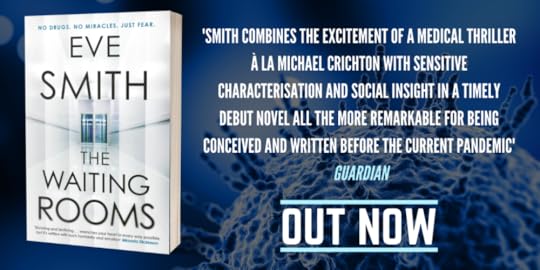
The launch process has also been bizarre. No book festivals to go to, no bookshop signings, no bookshops even open for the first few weeks. Nonetheless, I have benefited from some incredible support.
Bloggers and readers have written very kind words about my book. I have been lucky enough to get featured in some media, including The Guardian, with a wonderful review for The Waiting Rooms by Eric Brown. Waterstones picked The Waiting Rooms as one of their exciting new summer thrillers. And, to cap it all, this week, The Waiting Rooms was longlisted for The Guardian’s Not the Booker Prize.
This is a big deal for me. I mean, really. That longlist includes some of my heroes. As the underdog, I am relishing this unexpected chance to wriggle into their shadows, even for a two-week interlude, before the shortlist is decided.
There are over 200 authors on this list. So now, you probably know what’s coming.
If you have read my book, and you feel inclined, I would love you to cast a vote for The Waiting Rooms.
Let’s be honest: it’s a long, long shot. But even making it this far has been more than I dreamed of. And, after all, it is the summer of the strange.

If you think The Waiting Rooms deserves to be on the shortlist, vote before the 16th August using this link. Here’s how:
1) If you are not already a Guardian user, register to create an account (this is free, or you can choose to subscribe if you want to), go to settings and create a User Name. Then you can vote in the comments section in the link above.
2) Choose The Waiting Rooms and one other book from the longlist: they need to be from different publishers. My publisher is Orenda Books.
3) Write a mini-review (100 words or over) of The Waiting Rooms saying why you think it should be on the shortlist, including the word ‘vote.’
Thank you!

July 9, 2020
3,2,1: BLAST OFF!
Well, the day has finally come: the paperback of The Waiting Rooms has launched! Hurrah! I’m delighted, and not a little relieved that, despite the enormity of the challenges we’ve faced these past weeks, and continue to face, my first novel has found its way through the quarantine of lockdown to emerge in newly reopened bookstores.
Such a thing may seem trivial, and indeed it is, compared to the suffering endured by many during this pandemic. But sometimes, it is the simple pleasures that give us hope. I visited my local bookshop in Witney last week, and just being able to wander in, chat to the staff, and browse physical books, felt like such a treat.
With its portrayal of the advent and aftermath of an antibiotic crisis, I can’t promise that The Waiting Rooms will make easy reading right now: it won’t. But I can offer you a glimpse into an alternative world that shows the impacts of a different medical crisis on family life. And, whilst there are many parallels, this crisis hasn’t happened. Yet.

However, and I hate to say this, there is growing evidence that this crisis could come to pass. The Covid 19 pandemic is accelerating the spread of antimicrobial resistance. The sheer quantity of antibiotics being used to treat or prevent secondary bacterial infections is colossal. Some of these prescriptions are unnecessary: the antibiotics are of no use against the virus itself, they should only be administered if there is clinical evidence of a bacterial co-infection. This ‘just-in-case’ consumption will only exacerbate the already worrying levels of resistance to many drugs.
The COVID-19 pandemic has led to an increased use of antibiotics, which ultimately will lead to higher bacterial resistance rates that will impact the burden of disease and deaths during the pandemic and beyond.
— Tedros Adhanom Ghebreyesus, Director General, The World Health Organisation
And, just in case you thought I was done, there’s another reason for concern.
This one has nothing to do with the pandemic.
It’s what we put on our fork.
Just as we’ve learned the hard way that disease can pass from animals to humans, so too can antibiotic resistance. And recent research has shown that the transfer of resistance from farmed animal meat to humans, is much higher than originally thought. It may sound crazy, but eating the wrong burger could have serious long term consequences for your health.

Until now, the UK has been protected from the dangers of excessive antibiotic use in animals by rigorous EU policies on farming. But the looming prospect of a no-deal Brexit means UK consumers might soon be facing a choice between price and health in their shopping baskets.
The UK imports a heck of a lot of meat and dairy, most of which, currently, comes from the EU. But, as the UK government paves the way for trade deals and tariff-cuts in the event of a no-deal Brexit, the prospect of food imports from countries with very different standards to our own looks ever more likely.
British farmers have halved their use of antibiotics for routine preventative measures in livestock over the past 4 years. This is in line with the EU’s move to implement a total ban on all routine use of antibiotics in farming by 2022.
American farmers, on the other hand, have no such aims or restrictions. They use five times as many antibiotics as UK farmers do, and that amount is rising. What’s more, the US government strongly opposes any regulation or restriction of drug use in farming, despite strong scientific evidence of the consequences.

Sadly, the UK government is sitting on the fence when it comes to copying EU policy and committing to a total ban. Particularly as it’s flirting with a US trade deal, whose lobbyists are extremely vocal. Which could mean we end up lowering food standards and letting meat imports into our country that may be cheaper than EU products, but which are stuffed with antibiotics even though we know the inherent dangers.
The threat that antimicrobial resistance poses must, surely, win the day.
Otherwise, what was the point of commissioning a report back in 2014 which showed that 10 million people could be dying each year, globally, from antibiotic-resistant infections by 2050, unless we take action?
And what is the point of limiting the prescriptions of antibiotics in hospitals, care homes and surgeries, to prevent the spread of resistance, if all we are going to do is consume more resistant bacteria in our food?
What’s required here is a bit of joined-up thinking. And backbone.
I pray we can still manage both.
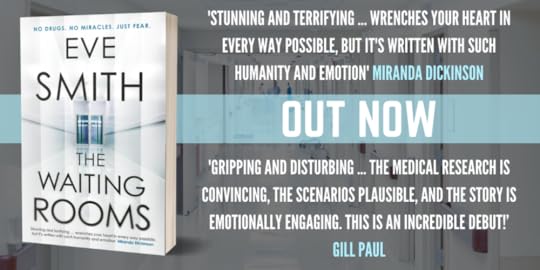
May 5, 2020
HOW COVID-19 MAY GIVE A SILENT PANDEMIC ITS VOICE
So here we are in May already, the month that celebrates spring, fertility and new life. It sure doesn’t feel very festive.
This year, the May bank holiday in the UK and other European countries has been moved from Monday 4th to Friday 8th May, to coincide with the 75th anniversary of VE day.
Huge celebrations were planned to commemorate the end of the Second World War in towns and villages across the UK, with churches holding special services including a national Ringing Out for Peace, processions down The Mall, traditional maypole and morris dancing and pubs making the most of a three-day weekend.
None of these gatherings will now take place thanks to a different kind of battle: our fight against the coronavirus pandemic.

There will, of course, be virtual events. But as we reflect on a war that changed the course of history, so too will we reflect on the long-lasting impacts of this global health emergency.
As of 5th May, the WHO dashboard shows 3,517,345 cases and a global death count of 243,401. Europe accounts for 45% of total cases. The United States for 33%. The big questions remain unanswered:
When will this be over? What will the world look like after COVID-19?
Could this virus come back?
On the plus side, this crisis has catalysed cross-border collaboration and transparency on an unprecedented scale. The development of rapid diagnostic tests and the quest to find an effective vaccine and cure have united governments, scientific & medical institutions, philanthropic foundations and corporates in a common purpose.
Thanks to their efforts and investment, and global sharing of data and solutions, some processes that would normally take decades have been accelerated to a matter of months or years.

But this is still far from over. And, I hate to say it, but it’s not just COVID-19 we need to worry about. The numbers are still being interrogated but, as with previous viral pandemics, it is not the virus alone that is responsible for all these deaths.
Secondary infections, like pneumonia and sepsis, take advantage of compromised immune systems, particularly in crowded environments like hospitals and care homes. Without effective drugs to treat those infections, the COVID-19 numbers could get one heck of a lot worse.
In an earlier blog, I referred to early reports from China that a significant number of deaths had been linked to secondary infections. Since then, further studies have revealed other microbial opportunists.
In Paris, 33% of COVID-19 patients were infected with aspergillus: a fungus that takes advantage of weakened immune systems, causing breathing difficulties, and which can be extremely drug-resistant. In another French cohort, 20% had bacteria and fungus in their lungs.

Studies during the 2009 SARS pandemic showed secondary bacterial pneumonia was present in 29% to 55% of patients who lost their lives. And now scientists believe the majority of deaths from the Spanish flu back in 1918 were caused not by the virus itself, but by secondary lung infections.
There were no antibiotics back then. Estimates vary widely but it’s believed up to one in five people infected, died.
Many of the antibiotics currently being used in intensive care units or prescribed by doctors in surgeries are already battling against resistant strains, such as the extremely common streptococcus pneumoniae which defeats first-choice antibiotics in some US regions more than half the time.
The challenge of antibiotic resistance could become an enormous force of additional sickness and death across our health system as the toll of coronavirus pneumonia stretches critical care units beyond their capacity.
— Julie L. Gerberding, chief patient officer and executive VP at Merck
Early studies show that antibiotics are being used at rates ranging from 45% to 100% of COVID-19 patients in hospitals around the world. The use of these drugs on such a vast scale, both as treatment and as prevention, means that drug resistance will escalate further as the bacteria that survive adapt and proliferate.
As Adam Roberts, an expert in antimicrobial resistance says:
“We do not expect healthcare workers to go into hospital situations without the correct protective equipment. Nor should we expect clinics to do their job without the appropriate antibiotics. It is part of our defence for any pandemic situation.”
And for that, we need sufficient supplies of antibiotics that work.

In the context of Covid-19, antibiotics should be considered as important as protective gowns or facemasks.
— Adam Roberts, microbiologist at the Liverpool School of Tropical Medicine
Unfortunately, this is all happening as our antibiotic pipeline continues to stall. As I discussed in another blog, the current market model simply does not work for antibiotic research and development. Consequently, we are facing a serious deficit in investment in new drugs at a time when we need them more than ever and our arsenal is seriously depleted.
And yet we have seen what can happen when countries come together with rescue packages of billions; we have seen the power of collective action to address a global health emergency.
The mortality count for this coronavirus is shocking. But the deaths each year from antibiotic-resistant infections are nearly three times as high and predicted to escalate dramatically if nothing is done. Surely this is the time to add investment in new antibiotics to each nation’s rescue list? To bring what WHO calls ‘the silent pandemic’ out into the open, for all to see and hear?
In the words of science gurus Claas Kirchhelle, Adam Roberts & Andrew C Singer:
But in this crisis, we can dare to hope; let the global unity of purpose and research that is tackling COVID-19 become a roadmap for solving one of the most pernicious and long-running crises in global medicine—the issue of increasing antibiotic resistance and a stuttering pipeline of solutions.
I’ll certainly be raising a toast to that this bank holiday.
The Waiting Rooms, my speculative thriller set in the advent and aftermath of an antibiotic crisis, is available as an ebook now. The paperback, out in July, is available for pre-order. A limited edition, signed hardback, exclusive to Goldsboro Books is now also available for pre-order.




